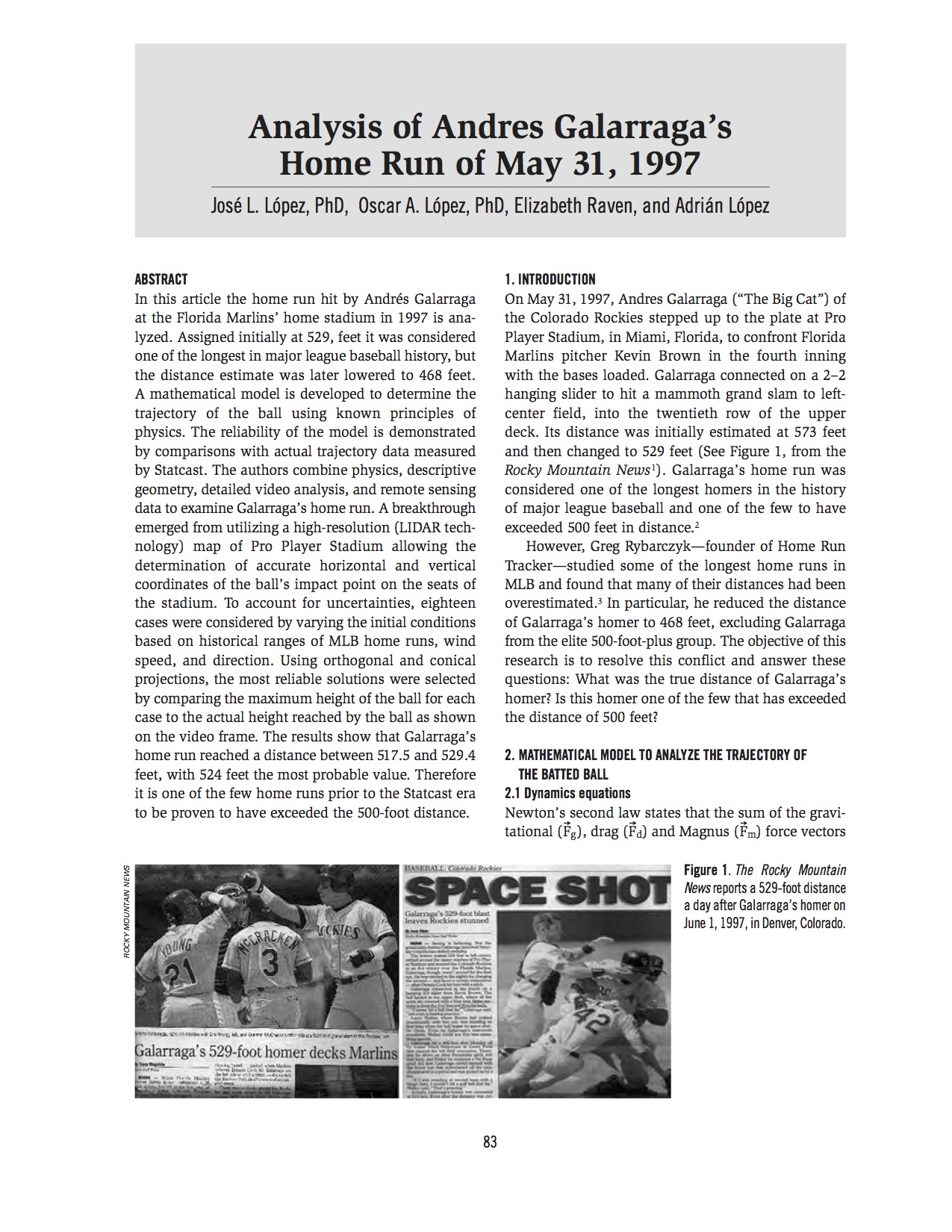Analysis of Andrés Galarraga’s Home Run of May 31, 1997
This article was written by Jose L. Lopez
This article was published in Fall 2017 Baseball Research Journal

Abstract
In this article the home run hit by Andrés Galarraga at the Florida Marlins’ home stadium in 1997 is analyzed. Assigned initially at 529 feet it was considered one of the longest in major league baseball history, but the distance estimate was later lowered to 468 feet. A mathematical model is developed to determine the trajectory of the ball using known principles of physics. The reliability of the model is demonstrated by comparisons with actual trajectory data measured by Statcast. The authors combine physics, descriptive geometry, detailed video analysis, and remote sensing data to examine Galarraga’s home run. A breakthrough emerged from utilizing a high-resolution (LIDAR technology) map of Pro Player Stadium allowing the determination of accurate horizontal and vertical coordinates of the ball’s impact point on the seats of the stadium. To account for uncertainties, eighteen cases were considered by varying the initial conditions based on historical ranges of MLB home runs, wind speed, and direction. Using orthogonal and conical projections, the most reliable solutions were selected by comparing the maximum height of the ball for each case to the actual height reached by the ball as shown on the video frame. The results show that Galarraga’s home run reached a distance between 517.5 and 529.4 feet, with 524 feet the most probable value. Therefore it is one of the few home runs prior to the Statcast era to be proven to have exceeded the 500-foot distance.
Click the page image above to download and read the full article (PDF).
JOSÉ L. LÓPEZ, PhD and OSCAR A. LÓPEZ, PhD are civil engineers and full professors at the School of Engineering in the Central University of Venezuela (UCV). José holds a PhD from Colorado State University and Oscar from the University of California at Berkeley. ELIZABETH RAVEN is an architect and associate professor at the University Institute of Technology. (Dr. F.R.P). ADRIAN LÓPEZ is an electrical engineering student at UCV. They are baseball fans. Their current research interest lies in the analysis of the longest home runs in MLB history.
Acknowledgments
The authors acknowledge the support of Santiago Yepez in the use of LIDAR images and the review of the manuscript made by Oscar Luis López. The authors also recognize the comments of the two anonymous reviewers from SABR who helped to improve the quality of the paper.
Appendix
An appendix to this paper, found online at SABR.org, describes in detail the procedure followed to obtain the most reliable solutions for the trajectory and projected distance of Galarraga’s home run, accompanied by additional graphs, graphics, and plots. The maximum height (H) reached by the ball in each of the 18 trajectories obtained is compared to the height shown in the video after performing orthogonal and conical projections.



